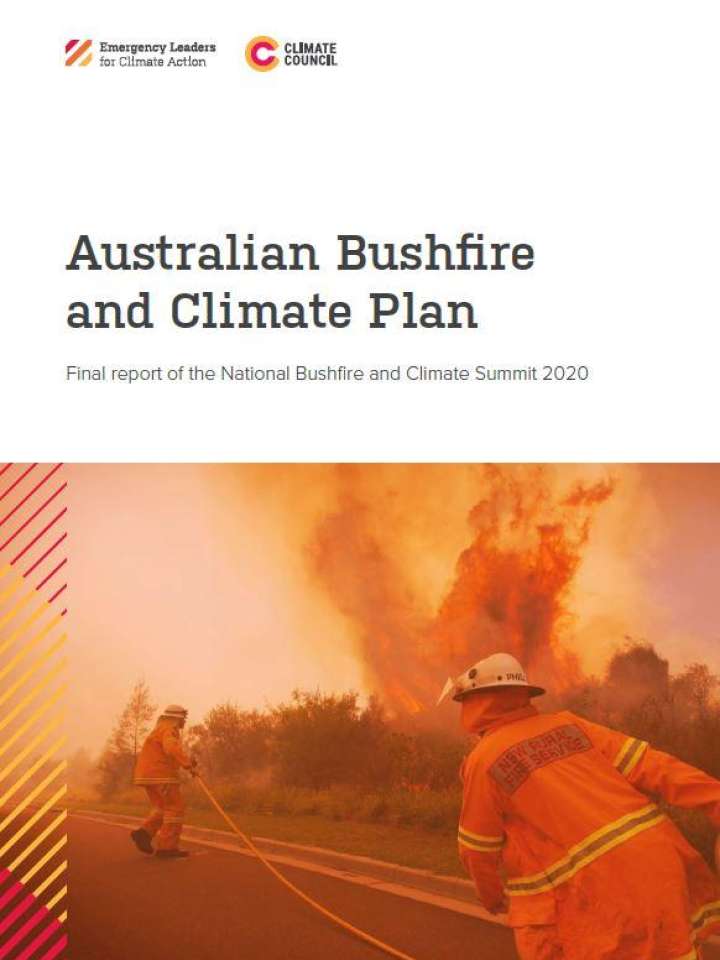Australian bushfire and climate plan
The National Bushfire and Climate Summit (June-July 2020) brought together hundreds of participants from across Australia, and the world, to share their experiences, and to formulate recommendations to address the worsening risk of devastating bushfires fuelled by climate change. Organised by Emergency Leaders for Climate Action and the Climate Council, former and current emergency leaders came together with Indigenous fire practitioners, health professionals, farmers, community leaders, social service providers, economists, local mayors, climate scientists, bushfire survivors and many others to address this challenge. This report is the culmination of that effort.
Building community resilience in communities vulnerable ahead of future fire seasons is essential. The report outlines a range of solutions in terms of readiness, including to (p. 3):
- Ensure the Federal Government works with insurance companies to develop a system to safely transition people out of high-risk properties and areas that are becoming uninsurable, to safer areas.
- Continue Telehealth - where people can consult their doctor over the phone to allow patients in bushfire-affected communities to access remote healthcare.
- Establish an independent insurance price monitoring scheme to increase the affordability and uptake of insurance and better protect Australians in disaster-prone areas. Insurance is a key factor in community resilience.
- Establish and fund permanent community resilience hubs in every vulnerable local government area. The hubs would provide accessible bushfire information and assist communities in developing disaster preparedness plans and to remain connected during and following a disaster. This is crucial as fire and emergency services facing increasing response workloads will be increasingly restrained in their ability to work in the community education/preparedness space.
More priority recommendations are proposed in the report, with respect to (pp. 5-7):
- Tackling the climate crisis;
- Dealing with more dangerous fires due to climate change;
- Managing the landscape in the age of climate change;
- Health and wellbeing in the age of climate change;
- A resilient, sustainable and community-led recovery.
Explore further
